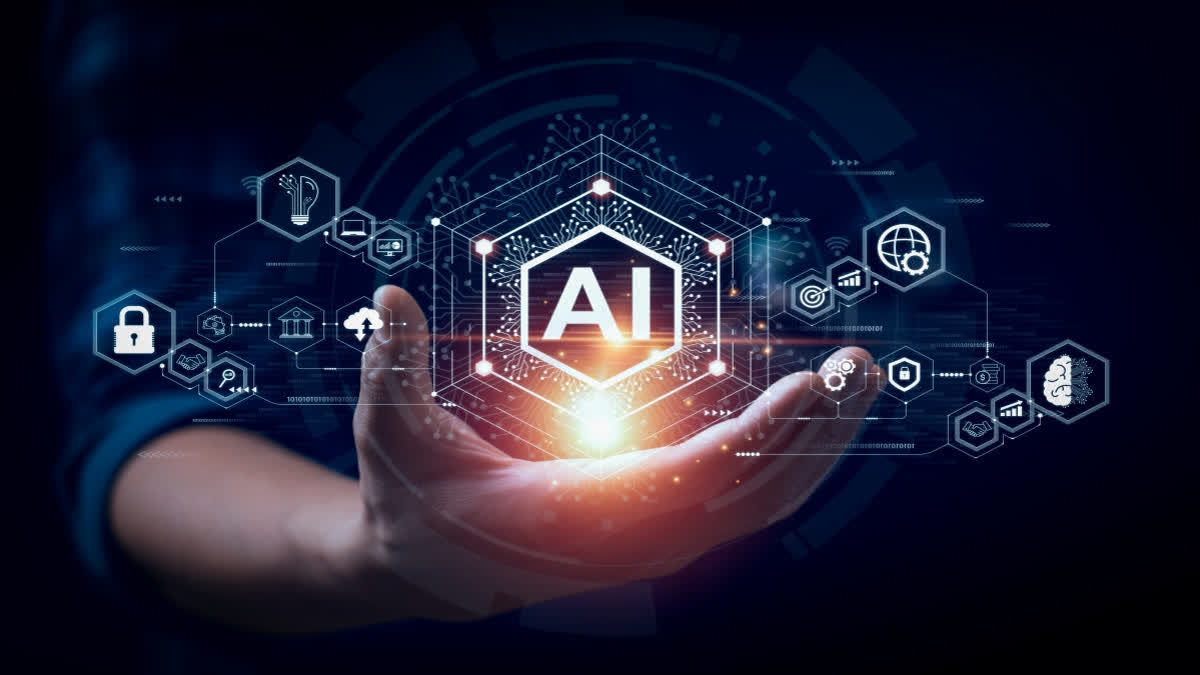Artificial Intelligence (AI) is an emerging field in computer science capable of creating intelligent computer software that closely mimics human intelligence. With AI we can process and analyze vast amounts of data quickly, and it can learn from experience and perform tasks that usually require human intelligence.
It has opened doors of unprecedented possibilities and challenges. While it is going to enhance productivity, improve healthcare and increase access to education, it has raised critical ethical questions on privacy, human rights, and job loss.
The painting shown here was generated by DALL.E, an Artificial Intelligence (AI) system based on our textual description fed through the machine. My son (Rahul) who is familiar with the setup kept interacting with it until the system came up with the final output. This landscape, which consisted of the seacoast, looked familiar to me. It looked like the Tangasseri beach in Kollam in Southern Kerala. I worked on the coastal stretch of Kerala in the initial part of my scientific career to understand the coastal erosion processes, and I was quite familiar with its landmarks.
The website says that “DALL.E can create realistic images and art from a description in natural language”. The output shown here surprised me and made me think about the evolving unprecedented impact of AI in our lives, not just in terms of the ease of doing physical or computational work, but in our creative activities like artistic efforts.

Are we entering a world where the machine will replace future creative geniuses like Tolstoy and Dostoyevsky? Or a painter and sculptor like Pablo Picasso? Experts think otherwise. The key difference between humans and AI is what is known as general intelligence, while AI has only narrow intelligence.
Endowed with general intelligence, humans can understand and learn new things faster than AI. Secondly, what humans have, and AI lacks is emotional intelligence – the ability to empathize and reciprocate. Both types of intelligence are the attributes that are required to be creative and original. The drawing of the AI-generated seacoast mentioned earlier cannot be called a ‘creative work’ as it was generated based on our dictation. However, the mimicking capabilities of AI from human-fed data can throw challenges in creative fields like movie scripts and acting.
The tipping point came when software firm Open AI released ChatGPT, a chatbot that can generate complete essays on various topics. The background actors and writers were on strike last year against Hollywood studios and streaming services for using AI-enabled content-creation platforms without paying them compensation. These platforms rely on Generative AI that can generate new text and digital replicas of actor likenesses based on reams of existing similar material. Although AI cannot produce original TV shows or movies, the AI script writer can be harnessed to produce a script based on plain language instructions and actor replicas.
The Hollywood workers’ strike has a message for the future. It showed for the first time how collective bargaining of the workers won against the rise of a new technology that affected their livelihood. Such types of protests are likely to happen in future in other sectors worldwide if AI becomes a threat to traditional jobs. Giovanni Melina, Deputy Division chief of the International Monetary Fund writes in their blog that “Artificial intelligence can increase productivity, boost economic growth, and lift incomes by enhancing productivity in some areas. However, it could also wipe out millions of jobs and widen inequality”.
Their research shows that while it will drastically impact job availability (almost 33 to 18 per cent in the advanced and economically emerging countries, respectively) and widen the inequality among the nations and within, it may create new types of jobs and new industries. The key question is whether the nations are prepared to deal with the ‘Yin-Yang’ type of impact on their economies and the general welfare of the people. It is time to find out means of developing social safety nets, investing in training workers and strengthening regulations from potential risks from AI.
As expressed in one of his interviews, Yuval Harari, the author and historian refers to the potential outcome of AI as “a social weapon of mass destruction” and he fears its impact on democracy, human intimacy, narrative control and social cohesion. In his interview with Ian Bremmer, Harari expresses his concern at the speed at which humans are ceding their power to machines. He cites the example of social media, which uses very primitive AI bots to maximise user interaction and grab peoples’ attention by spreading outrage. This is destroying the public trust and conversations, ultimately eroding democratic institutions. He warns that we need to do safety checks on any new AI technology before it is released into the public sphere and insists on having regulatory bodies to control its deployment.
I am reminded of the plot of “2001: A Space Odyssey” – a 1968 epic science fiction film based on the script written by Arthur C. Clark. The movie is centred on an American space mission to Jupiter with human pilots, while the spacecraft operations are controlled by a computer called HAL 9000, with a human-like intelligence. The story progresses how HAL 9000 plots to take over the control of the spacecraft from the humans.
This is probably the first time science fiction dealt with the clash of humans versus intelligent machines. The concept of HAL is reportedly suggested by Irving John Good, a pioneer in computing, and one of the advisors of the movie director Stanley Kubrick. With advances in AI technology in the 21st century, the character HAL who malevolently takes control of the humans and the spacecraft has a message for our times. People are divided on whether the consequences of the arrival of AI would be beneficial or apocalyptic. Geoffrey Hinton, a pioneer of neural networks, deep learning and AI who left Google thinks it’s time to confront the existential dangers of artificial intelligence because of “the increasingly powerful machines’ ability to outperform humans in ways that are not in the best interest of humanity.”
Read More



